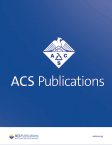Abstract PO2-08-07: Evaluating chemotherapy receipt and candidacy for PARP inhibitors in germline BRCA1/2 carriers with early and locally advanced breast cancer
IF 3.4
Q2 PUBLIC, ENVIRONMENTAL & OCCUPATIONAL HEALTH
引用次数: 0
Abstract
Introduction: While enhanced breast screening of germline BRCA1/2 carriers results in earlier stage at diagnosis, the impact of tumour biology and BRCA mutation on chemotherapy receipt in early stage disease remains understudied. Methods: We retrospectively reviewed treatment administered following a first diagnosis of BRCA1/2-associated breast cancer between 2003-2023 at our institution. Chemotherapy receipt (neoadjuvant or adjuvant) was evaluated according to tumor size, biologic subtype, and BRCA mutation. Current guidelines for PARP inhibitor use were applied to estimate the proportion of affected BRCA1/2 carriers that would be deemed eligible for targeted therapy in the future. Results: Overall, 251 affected BRCA1/2 carriers were included; 137 (54.6%) BRCA1 (median age 40 years, range 19-72) and 114 (45.4%) BRCA2 (median age 43, range, 24-80 years). Chemotherapy was administered in 70.1% of index breast cancer cases and was significantly associated with clinical tumor size (36.7% T1a-T1b, 90.9% T1c, 95.2% T2, 95.3% T3-T4, p< 0.001), nodal status (71.8% cN0 vs. 100% cN1-2, p=0.004), and biologic subtype (90.0% TNBC vs. 75.0% ER+HER2-, p=0.02). BRCA1-associated breast cancers were less likely to present with DCIS or T1 tumours (%Tis/T1; 46.7% BRCA1 vs. 70.8% BRCA2, p< 0.001) and more likely to present with triple negative disease (71.4% BRCA1 vs. 24.6% BRCA2, p< 0.001). BRCA1 carriers were more likely to require chemotherapy for index breast cancer (81.8% BRCA1 vs. 56.1% BRCA2, p< 0.001). In subgroup analysis of early stage, T1N0 disease, chemotherapy was administered in 79.0% BRCA1 and 52.2% BRCA2 patients (p=0.03). If recent guidelines incorporating biologic subtype, nodal involvement, and response to neoadjuvant chemotherapy were retrospectively applied to the cohort, 33.6% would be deemed eligible for PARP inhibitors in the adjuvant setting, including 40.9% BRCA1 and 17.5% BRCA2 affected carriers (p < 0.001). Conclusion: Chemotherapy receipt is high in BRCA-associated breast cancers including in early stage, node-negative disease. Overall, one third of affected carriers are expected to be eligible for PARP inhibitors in the adjuvant setting. Future studies exploring how this information may impact decisions around risk-reducing mastectomy are warranted. Citation Format: Stephanie Wong, Carla Apostolova, Amina Ferroum, Basmah Alhassan, Ipshita Prakash, Mark Basik, Karyne Martel, Sarkis Meterissian, David Fleiszer, Nora Wong, Talia Malagon, William Foulkes, Jean-Francois Boileau. Evaluating chemotherapy receipt and candidacy for PARP inhibitors in germline BRCA1/2 carriers with early and locally advanced breast cancer [abstract]. In: Proceedings of the 2023 San Antonio Breast Cancer Symposium; 2023 Dec 5-9; San Antonio, TX. Philadelphia (PA): AACR; Cancer Res 2024;84(9 Suppl):Abstract nr PO2-08-07.摘要 PO2-08-07:评估患有早期和局部晚期乳腺癌的种系 BRCA1/2 携带者接受化疗的情况和 PARP 抑制剂的适用性
导言:虽然加强对生殖系 BRCA1/2 基因携带者的乳腺筛查可使诊断阶段提前,但肿瘤生物学和 BRCA 基因突变对早期疾病化疗接收的影响仍未得到充分研究。方法:我们回顾性分析了本院 2003-2023 年间首次确诊 BRCA1/2 相关乳腺癌后的治疗情况。根据肿瘤大小、生物亚型和 BRCA 基因突变对接受化疗(新辅助或辅助)的情况进行了评估。采用当前的 PARP 抑制剂使用指南来估算未来有资格接受靶向治疗的受影响 BRCA1/2 携带者的比例。结果:总共纳入了 251 名受影响的 BRCA1/2 基因携带者;其中 137 名(54.6%)为 BRCA1 基因携带者(中位年龄 40 岁,年龄范围 19-72 岁),114 名(45.4%)为 BRCA2 基因携带者(中位年龄 43 岁,年龄范围 24-80 岁)。70.1%的指标乳腺癌病例接受了化疗,化疗与临床肿瘤大小(36.7% T1a-T1b、90.9% T1c、95.2% T2、95.3% T3-T4,p< 0.001)、结节状态(71.8% cN0 vs. 100% cN1-2,p=0.004)和生物亚型(90.0% TNBC vs. 75.0% ER+HER2-,p=0.02)显著相关。BRCA1相关乳腺癌出现DCIS或T1肿瘤的几率较低(%Tis/T1;46.7% BRCA1 vs. 70.8% BRCA2,p< 0.001),出现三阴性疾病的几率较高(71.4% BRCA1 vs. 24.6% BRCA2,p< 0.001)。BRCA1 携带者更有可能需要对指数乳腺癌进行化疗(81.8% 的 BRCA1 与 56.1% 的 BRCA2 相比,p< 0.001)。在早期 T1N0 疾病的亚组分析中,79.0% 的 BRCA1 患者和 52.2% 的 BRCA2 患者接受了化疗(P=0.03)。如果将生物亚型、结节受累和对新辅助化疗的反应等最新指南回顾性地应用于该群组,33.6%的患者将被认为符合在辅助治疗中使用PARP抑制剂的条件,其中包括40.9%的BRCA1和17.5%的BRCA2携带者(P<0.001)。结论:BRCA相关乳腺癌患者接受化疗的比例很高,包括早期结节阴性疾病。总体而言,预计三分之一的受影响携带者有资格在辅助治疗中使用 PARP 抑制剂。今后有必要开展研究,探讨这一信息如何影响有关降低风险的乳房切除术的决策。引用格式:Stephanie Wong, Carla Apostolova, Amina Ferroum, Basmah Alhassan, Ipshita Prakash, Mark Basik, Karyne Martel, Sarkis Meterissian, David Fleiszer, Nora Wong, Talia Malagon, William Foulkes, Jean-Francois Boileau.评估早期和局部晚期乳腺癌种系 BRCA1/2 携带者接受化疗的情况和 PARP 抑制剂的候选资格 [摘要].In:2023 年圣安东尼奥乳腺癌研讨会论文集;2023 年 12 月 5-9 日;德克萨斯州圣安东尼奥。费城(宾夕法尼亚州):AACR; Cancer Res 2024;84(9 Suppl):Abstract nr PO2-08-07.
本文章由计算机程序翻译,如有差异,请以英文原文为准。
求助全文
约1分钟内获得全文
求助全文
来源期刊

ACS Chemical Health & Safety
PUBLIC, ENVIRONMENTAL & OCCUPATIONAL HEALTH-
CiteScore
3.10
自引率
20.00%
发文量
63
期刊介绍:
The Journal of Chemical Health and Safety focuses on news, information, and ideas relating to issues and advances in chemical health and safety. The Journal of Chemical Health and Safety covers up-to-the minute, in-depth views of safety issues ranging from OSHA and EPA regulations to the safe handling of hazardous waste, from the latest innovations in effective chemical hygiene practices to the courts'' most recent rulings on safety-related lawsuits. The Journal of Chemical Health and Safety presents real-world information that health, safety and environmental professionals and others responsible for the safety of their workplaces can put to use right away, identifying potential and developing safety concerns before they do real harm.
 求助内容:
求助内容: 应助结果提醒方式:
应助结果提醒方式:


